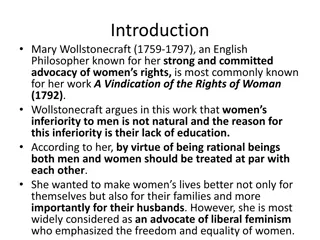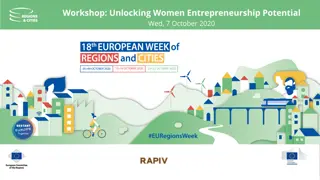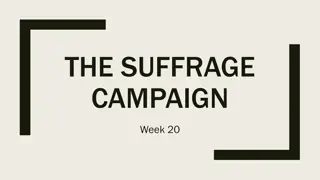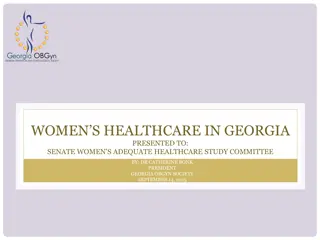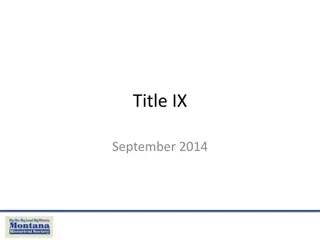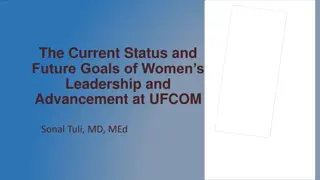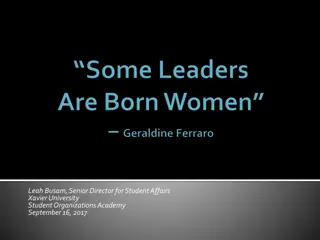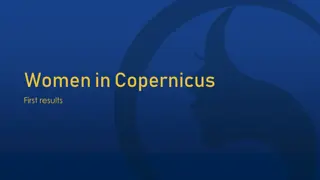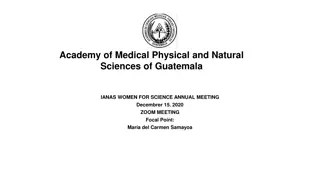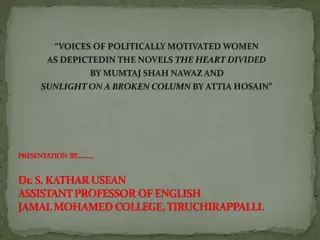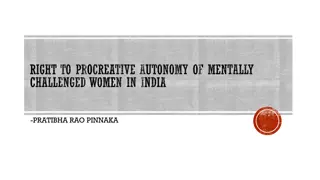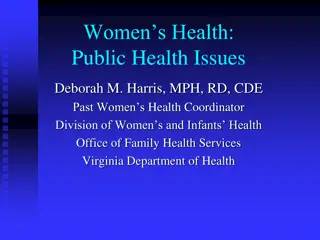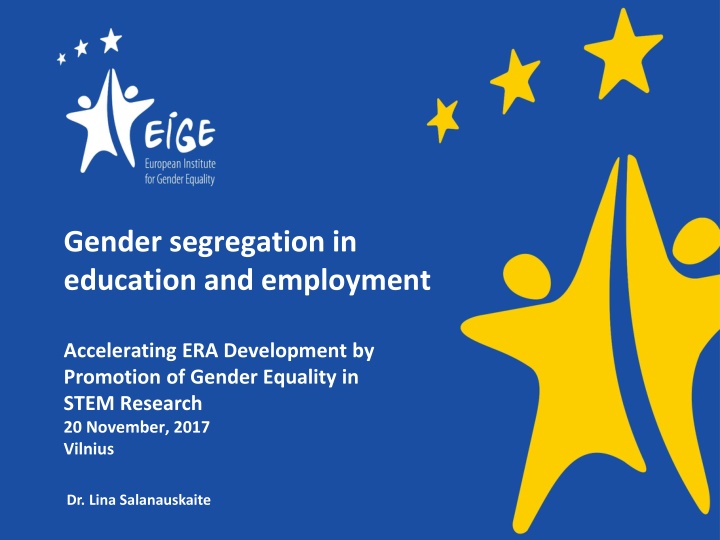
Accelerating ERA Development Through Gender Equality in STEM Research
Explore the challenges and opportunities in promoting gender equality in STEM education and employment to propel ERA development. Gain insights into the share of graduates in STEM fields, rising demand for professionals, and the impact of gender segregation on inclusive economic growth.
Download Presentation

Please find below an Image/Link to download the presentation.
The content on the website is provided AS IS for your information and personal use only. It may not be sold, licensed, or shared on other websites without obtaining consent from the author. If you encounter any issues during the download, it is possible that the publisher has removed the file from their server.
You are allowed to download the files provided on this website for personal or commercial use, subject to the condition that they are used lawfully. All files are the property of their respective owners.
The content on the website is provided AS IS for your information and personal use only. It may not be sold, licensed, or shared on other websites without obtaining consent from the author.
E N D
Presentation Transcript
Gender segregation in education and employment Accelerating ERA Development by Promotion of Gender Equality in STEM Research 20 November, 2017 Vilnius Dr. Lina Salanauskaite
STEM: an important share of graduates Share of graduates in STEM (2013-2015), tertiary and VET education: 40% % 30% 20% 10% 0% DE NL MT DK PL ES PT LT SE EE LU LV FI FR AT SI EL SK HR IT UK BE IE CZ RO EU-28 CY HU BG Engineering, manufacturing and construction Natural sciences, mathematics and statistics Information and Communication Technologies
Rising demand, major shortages Demand for STEM professionals and associate professionals is expected to grow by around 8% by 2025; average 3% growth forecast for all occupations (Cedefop) Major skills shortages of STEM and in particular ICT professionals now; expected to exacerbate with demographic developments In spite of a series of measures, women participation in STEM studies remains low in most Member States Low participation of women is increasingly associated with an insufficient supply of STEM skills - a barrier towards a strong and inclusive economic growth
Scope of the study Background: Beijing platform for action (BPfA) and support to Council Presidencies Study objectives: Trends of women s and men s subject choices in education and training since 2004 and by country; Gender analysis of the transitions to employment of graduates in fields of education and training non-traditional to their gender by country; Gender segregation in the labour market and gender pay gap.
Share of 15-year-olds expecting to work in science-related occupations at age 30 Share of 15-year-olds expecting to work in science-related occupations at age 30, 2015: Top performers in science
Segregation in education Share of women in STEM study fields, 2013-2015: Notes: EU-28 is calculated as the unweighted average across countries with available data; data refer to average value during the period 2013 2015 due to data reliability constraints; based on EUROSTAT data [educ_uoe_grad02].
Occupational pathways of STEM graduates Across the EU, vocational education has a higher gender segregation than tertiary education. Women graduating from STEM in vocational education are in particular disadvantaged regarding opportunities to work in STEM jobs.
If leaving STEM: other occupations of STEM graduates, 2014 (%)
In summary: progress stalled Change in a share of women STEM graduates (2004-2012):
Conclusions Gender segregation in education and the labour market is associated with creating and perpetuating gender inequalities in and beyond the labour market Segregation narrows employment choices and reinforces gender stereotypes The objective of gender equality policy should not necessarily be a homogenisation of the labour market by gender, although gendered roles shall be equally valued and remunerated
What and when? November 17, 2017 main findings in relation to gender segregation on the labour market December 7, 2017 expected to give basis to Council Conclusions December 7, 2017 main findings in relation to gender segregation in education End of January, 2018 final publication



